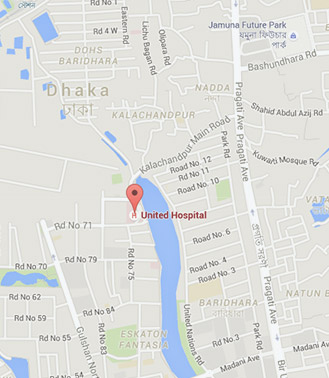Effect of Spinal Radiation in a young child with advanced radiation technique
Dr Sharif Ahmed, Dr Rashid Un Nabi, Dr Ashim Kumar Sengupta, Karthick Raj Mani, Anisuzzaman Bhuiyan, Md Faruk Hossain, Anamul Haque
Spinal gangliogliomas are rare, comprising 1.1% of all spinal cord neoplasms. They are more frequent in children, representing 15% of intramedullary neoplasms in the paediatric age group. The prsesentation of intramedullary tumours depends on their size and location. The most common presenting symptoms include back/neck pain, radicular pain, weakness, paraesthesia, gait disturbance and bowel and bladder dysfunction. Brown-Sequard syndrome may occur. An uncommon presentation is acute headache due to subarachnoid haemorrhage. In children, progressive scoliosis may be seen. Motor regression and frequent falls may be the presenting features in young children. Symptoms are usually slowly progressive. Due to their non-specific nature, the diagnosis is often delayed. Treatment is usually done by surgery with adjuvant radiation therapy. Radiation is usually delivered to the involved segment in the spinal cord as well as to the uninvolved segment above and below. Review papers suggest that direct decompressive surgery combined with postoperative radiotherapy provide better outcomes than treatment with single modality treatment.
A 4 year 7 months, old boy came to the hospital with complaints of sudden onset of neck bending and leg bending along with pain. There was history of inability to move his right hand for 20 days. There was also history of spine bending backward for 4 months and inability to walk for 3 months. On examination he was afebrile, normotensive, conscious and well alert (GCS 15/15; E4V5M6). On physical examination findings were kyphosis at dorsal region with muscle power of right upper limb 4/5 & left upper limb-5/5 and both lower limb 3/5. Laboratory findings were within normal limits. But MRI of Cervico-thoracic spine was suggestive of syrinx (syringohydromyelia) with astrocytoma; at the level of T3 spine to T7-8 disc and at level of T6-7, T7-8 & T8-9 showed posterior bulging of disc without significant compression on corresponding exiting nerve roots. Surgery was done with Laminectomy at D2- D7 vertebra with myelotomy, decompression of tumour & biopsy. Histopathology report revealed Intramedullary Tumour consistent with ganglioma WHO grade-II. Post operative recovery was good. Patient was planned to treat with adjuvant radiotherapy after stitch removal. Post operative MRI showed intra-medullary ganglio-glioma at D3-7 level with syringohydromyelia. Radiotherapy was delivered using 6 MV Photon to Spinal region with VMAT (Rapid Arc) to a total Dose of 50 Gy in 25 fractions from 09.11.13 to 11.12.13 with SIB to GTV 50 Gy, CTV 45 & PTV 40Gy. He tolerated the radiation therapy well and there was no complain of severe pain. On follow up, MRI showed minimal interval amelioration of disease process as compared with previous. MRI after 3 months showed fibrotic residual from D1/D2 disc to D7 disc. On regular follow up the patient showed subjective improvement. He was able to walk. His muscle power of both upper and lower limb was 5/5.
This case illustrated that the use of advanced technique in radiation therapy like Volumetric Modulated Arc Therapy (Rapid Arc) can reduce side effect and give facilities to deliver full dose of radiotherapy to the gross tumour volume while restricting the dose to normal tissue and critical organs of body. With the use of advance technique and minimizing the side effects, VMAT can improve the patient’s symptoms and long term remission of disease.



